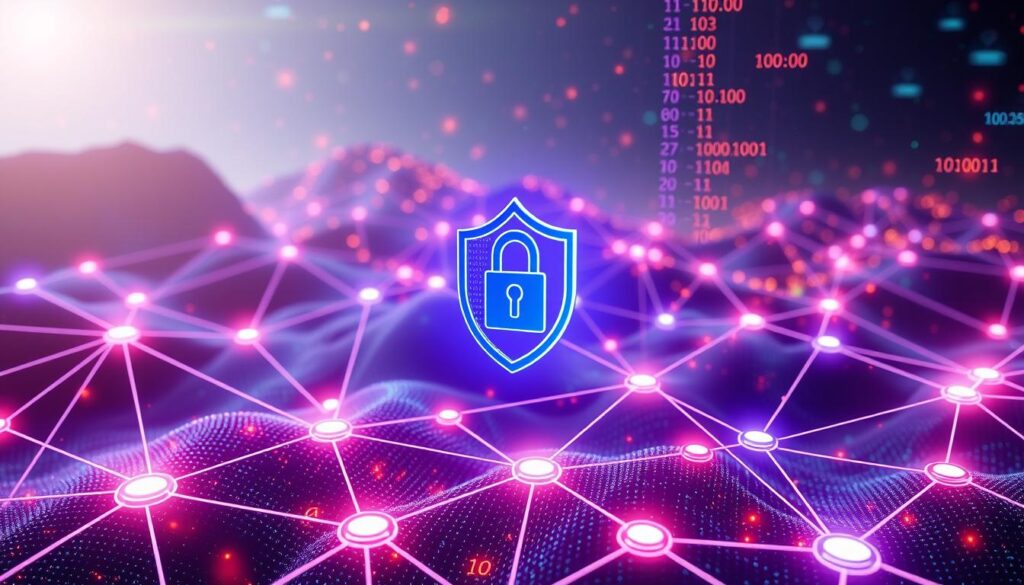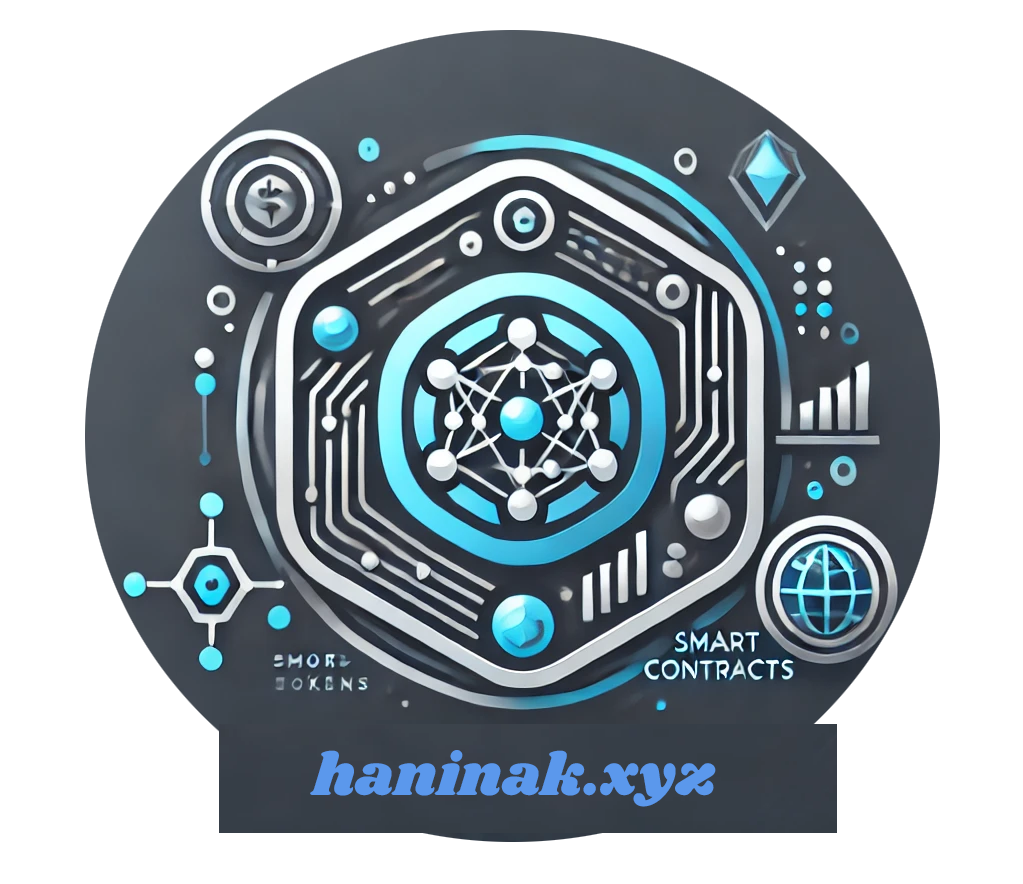How can smart contracts be authenticated and ensure their integrity?
Smart contracts are self-executing agreements with rules set in blockchain technology. They have changed how we do digital transactions. These apps, built on Blockchain platforms like Ethereum, use blockchain’s immutability to keep records safe.
Each product gets a unique digital ID stored on the blockchain. This ID comes with its authentication data. This makes sure the product’s authenticity is always recorded.
The Smart Contracts Technology checks product authenticity in real-time. This makes the supply chain more efficient and cuts down fraud risks. Smart contracts track each product’s journey on the blockchain.
This allows for easy spotting of fake products. If a counterfeit is found, smart contracts can take action. This could be alerting authorities or starting recalls. It saves time and money by avoiding manual checks.
The blockchain’s transparency and Cryptography are key to smart contract security. Smart contracts use digital signatures and hashing to keep data safe. This lets everyone check the contract’s terms and outcomes, building trust and openness.
Understanding Smart Contract Authentication Fundamentals
Smart contracts are digital agreements that run on the Ethereum Virtual Machine (EVM) or other Distributed Ledger Technology platforms. They need strong authentication to keep them safe and reliable. Cryptography uses advanced encryption and hashing to protect the code and transactions of smart contracts.
Role of Cryptography in Smart Contract Security
Cryptographic methods like digital signatures and encryption are key to smart contract security. They make sure only the right people can use and change smart contracts. Consensus Algorithms also help keep smart contract transactions safe and unchanged.
Blockchain’s Immutable Nature in Authentication
Blockchain technology is special because it’s distributed and hard to change. It makes sure all transactions, including smart contract actions, are recorded safely. This makes smart contract authentication more trustworthy and reliable.
Digital Signatures and Verification Methods
Digital signatures are a big part of Solidity and other smart contract languages. They help prove who is allowed to interact with smart contracts. Good key management and verification keep the system safe from unauthorized changes.
Learning about smart contract authentication helps developers and companies make secure blockchain apps. These apps can make processes easier, more open, and less prone to fraud or tampering.

Smart Contracts Technology Implementation and Security Protocols
Smart contracts were first suggested by Nick Szabo in 1994. They change how we do transactions and agreements. These digital contracts work on their own, without needing lawyers or middlemen. But, they are hard to keep safe because they can’t change once they’re set.
Smart contracts face many security challenges. Problems like reentrancy attacks and integer overflow/underflow can happen. Also, gas limit issues, access control flaws, and timestamp dependence are big concerns. Mistakes in the code can also cause trouble.
Using the right cryptography and managing gas well is key. This makes transactions cheaper and faster. But, there’s a risk of a single point failing, which could break the whole system. To keep smart contracts safe, we need to check them often, use known patterns, and have special security steps for each platform. We also have to watch for and act on any strange activity to keep these smart contract systems strong.
| Security Consideration | Description |
|---|---|
| Reentrancy Attacks | Vulnerabilities that allow attackers to repeatedly withdraw funds from a contract before the contract can update its internal state. |
| Integer Overflow/Underflow | Errors that occur when mathematical operations exceed the maximum or minimum value of a data type, leading to unexpected results. |
| Gas Limit Issues | Inefficient gas usage in smart contracts, which can result in high transaction costs and slow execution times. |
| Access Control Flaws | Vulnerabilities that allow unauthorized access to sensitive contract functions or data. |
| Timestamp Dependence | Reliance on the block timestamp, which can be manipulated by miners, leading to potential security issues. |
To fix these problems, smart contract makers need to test and check their work carefully. They should also keep an eye on things as they go along. By following the best practices and using cryptography and oracles wisely, we can make smart contracts better. This will help them stay reliable and useful for a long time.

Automated Authentication Mechanisms and Integrity Checks
In the world of Blockchain and Decentralized Applications (DApps), security is key. Automated systems help keep smart contracts safe and reliable. They use the Ethereum Virtual Machine (EVM) and Solidity to check for threats in real-time.
Real-Time Verification Systems
Real-time systems check products and transactions right away. They use Blockchain’s unchangeable nature to track assets. This makes sure transactions are smooth and safe.
These systems work with smart contracts to cut down on errors and fraud. This makes the whole process more reliable.
Smart Contract Auditing Tools
Smart contract auditing tools are vital. They find bugs and weaknesses in the code. This ensures the contract works right and follows best practices.
Regular audits and secure coding are crucial. They keep smart contracts safe and reliable.
Vulnerability Detection and Prevention
It’s important to find and prevent threats before they happen. Continuous monitoring systems watch for threats in real-time. This lets them act fast to protect the contract.
Using security patterns and access controls also helps. These steps make smart contracts even safer.
| Benefit | Statistic |
|---|---|
| Efficiency Increase | 98% increase in efficiency compared to manual contract management processes |
| Reduction in Transaction Costs | 85% reduction in transaction costs by removing intermediaries |
| Decrease in Legal and Administrative Costs | 90% decrease in legal and administrative costs related to dispute resolutions |
| Real-time Operation | Smart contracts operate in real-time, triggering actions as soon as the conditions are met |
| Transparency | 100% transparency by recording all actions on the Blockchain and making them visible to all stakeholders |
By using these systems, smart contracts get better security and efficiency. This makes DApps more popular in many industries.
Smart Contract Interoperability and Cross-Chain Authentication
The blockchain world is growing fast. Smart contract interoperability and cross-chain authentication are key. Distributed Ledger Technology lets us create smart contracts. But, we need to make them work together smoothly across different networks.
Oracles help by bringing outside data to smart contracts. They connect the blockchain to the real world. Consensus Algorithms keep transactions safe and sound across blockchains.
But, making smart contracts work together is tricky. We need new ways to keep them safe as they move between networks. Creating standard ways to link blockchains is essential for secure smart contract use.
| Solution | Description | Key Features |
|---|---|---|
| Sidechains | Separate blockchains that are interoperable with the main blockchain, enabling the transfer of assets and data between them. | Examples: The Loom Network, RootStock (RSK), and Liquid. |
| Trusted Relays | Direct links between blockchains that facilitate the verification of data without the need for intermediaries. | Enables seamless cross-chain transactions and data transfer. |
| Notary Schemes | Involve trusted witnesses that validate claims of untrusted blockchains in the interoperability process. | Provides an additional layer of security and trust for cross-chain interactions. |
| Hashed Time-Lock Contracts (HTLC) | Rely on hash-lock and time-lock mechanisms to enable cross-chain transactions. | Ensures atomic swaps between different cryptocurrencies and blockchain networks. |
| Blockchain of Blockchains (BoB) | Architecture that connects multiple blockchains, enabling interoperability and cross-chain communication. | Examples: Polkadot and Cosmos. |
As blockchain grows, so does the need for smart contract interoperability and cross-chain authentication. We must find ways to make cross-chain interactions safe and smooth. This will help blockchain technology spread across many industries.
Conclusion
Smart contracts have the power to change how we make deals and do business. But, keeping them safe is key to making this happen. We need strong ways to check who’s who, regular checks to make sure everything works right, and to follow tested security steps.
As Decentralized Applications (DApps) grow, we must tackle new problems like working across different systems and new dangers. The future of Smart Contracts Technology depends on finding a balance between new ideas and strong Cryptography-based security. This will help us make deals and transactions work smoothly and safely.
Using Blockchain tech’s strong points, like its unchangeable record and decentralized setup, smart contracts can change many fields. From finance and real estate to HR and more, this tech has a lot of potential. As it gets better, its use will grow. This will happen if we keep improving how we check who’s who, make sure everything is secure, and audit everything well.







